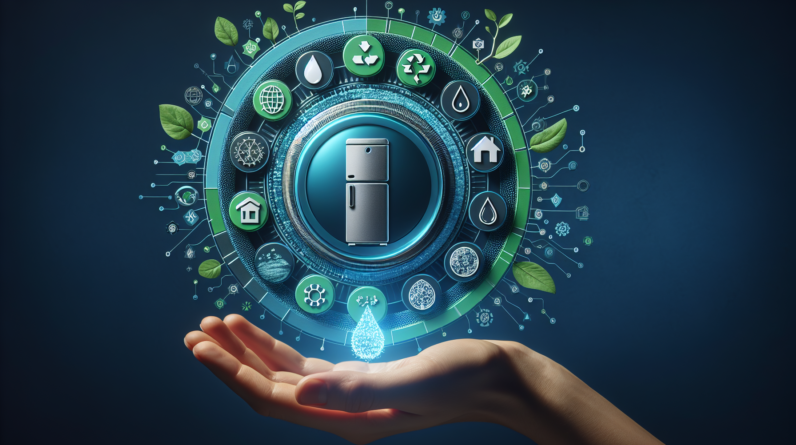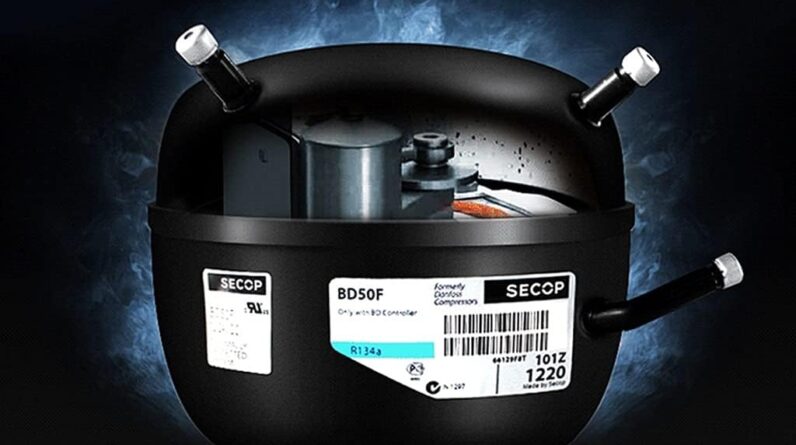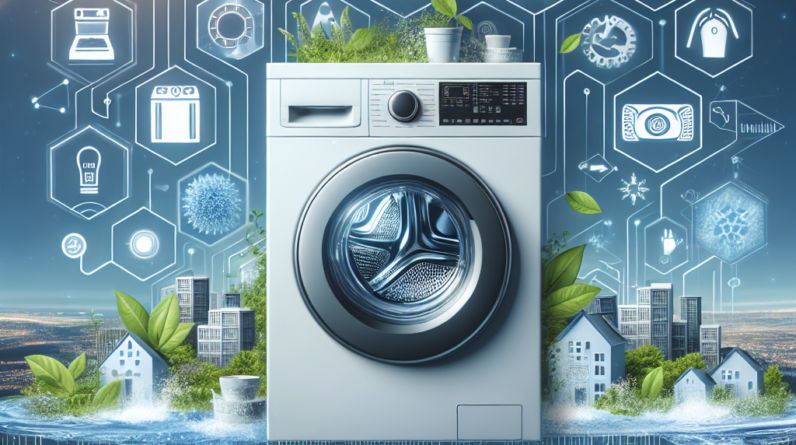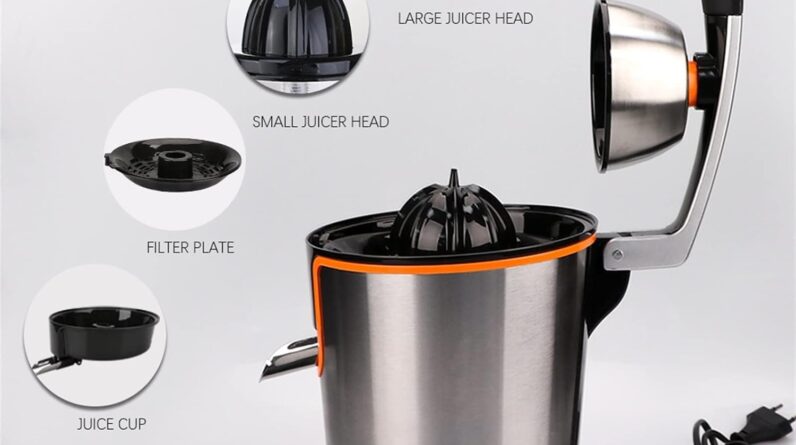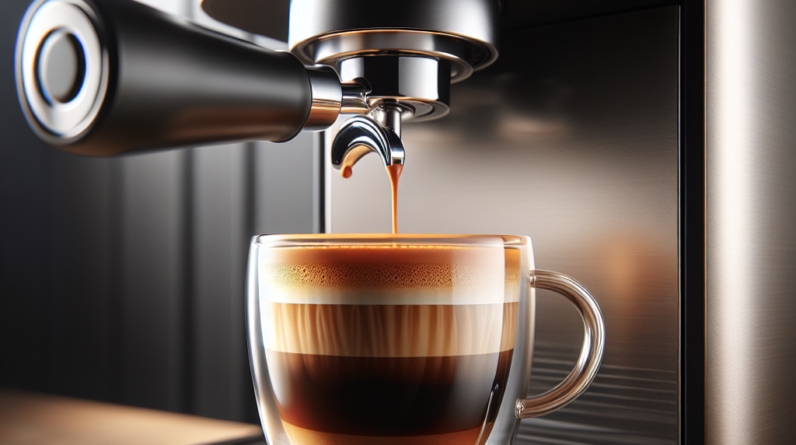
If you’re looking to reduce your energy consumption and save some money on your utility bills, you might be wondering how to make your dryer more energy-efficient. Well, fret not, because we’ve got you covered! In this article, we’ll explore some simple yet effective tips and tricks that will help you maximize the efficiency of your dryer, without compromising on its performance. So, whether you’re concerned about the environment or simply want to cut down on your energy costs, read on to discover how you can make your dryer more energy-efficient.

Regular Maintenance
Clean the lint trap after every load
One of the simplest ways to maintain the efficiency of your dryer and make it more energy-efficient is by cleaning the lint trap after every load. The lint trap collects lint and other debris that can clog the vent and restrict air flow, making your dryer work harder and use more energy. By cleaning the lint trap, you not only improve the performance of your dryer but also reduce the risk of fire hazards. So, don’t forget to take a few seconds to clean the lint trap after each load.
Inspect and clean the exhaust vent regularly
Along with cleaning the lint trap, it is essential to inspect and clean the exhaust vent regularly. Over time, lint can accumulate inside the vent, causing a build-up that reduces airflow and hampers the drying process. A clogged exhaust vent not only increases energy consumption but also poses a fire risk. To ensure proper ventilation and energy efficiency, it is recommended to have your dryer’s exhaust vent professionally cleaned at least once a year.
Ensure proper ventilation around the dryer
Proper ventilation around the dryer is crucial for its energy-efficient operation. Make sure that the area around the dryer is free from any obstructions, such as boxes, clothing, or debris. Allow sufficient space for air to circulate around the unit, as this will help prevent overheating and improve drying performance. Additionally, ensure that the vent pipe is not kinked or crushed, as this can impede airflow and reduce energy efficiency.
Load Optimization
Avoid overloading the dryer
Overloading your dryer not only results in longer drying times but also decreases its energy efficiency. When you cram too many clothes into the drum, the hot air has difficulty circulating and drying each item effectively. This can lead to damp clothes and the need for additional drying cycles. To make your dryer more energy-efficient, avoid overloading it and instead opt for smaller, manageable loads.
Combine loads when possible
Combining multiple loads into one can significantly improve the energy efficiency of your dryer. For example, if you have a load of towels and another load of sheets, consider combining them into a single load to maximize drying efficiency. Combining loads can help take advantage of the heat retained from the previous load and reduce overall drying time, saving both energy and time.
Separate items by weight and fabric type
To optimize drying efficiency and improve energy conservation, it is important to separate items by weight and fabric type. Heavier items, such as jeans or towels, take longer to dry, while lighter fabrics, like shirts or underwear, dry more quickly. By grouping similar items together, you can adjust the drying cycles accordingly and avoid over-drying delicate fabrics or continuously running the dryer for heavier items. By properly separating your laundry, you can optimize the drying process and enhance energy efficiency.
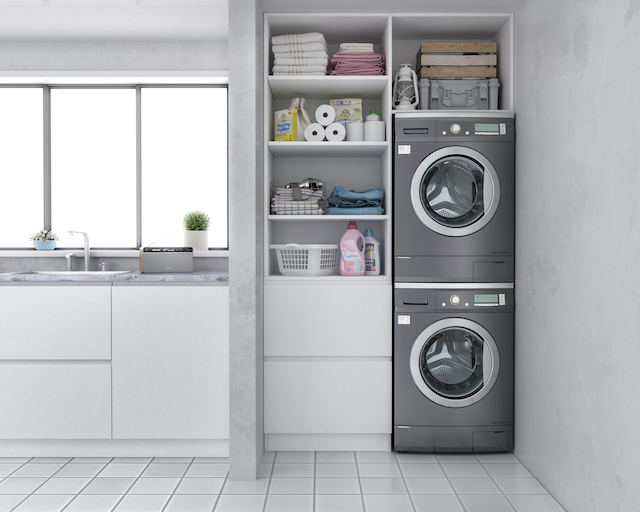
Drying Tips
Use the moisture sensor option
Many modern dryers come equipped with a moisture sensor option that detects the level of moisture in the clothes and automatically stops the drying cycle when they are dry. This feature is incredibly useful in reducing energy consumption, as it prevents over-drying and eliminates the need for excessive drying time. By using the moisture sensor option, you not only save energy but also protect your clothes from damage caused by over-drying.
Choose the appropriate drying cycle
Different drying cycles are designed for different types of fabric and levels of dryness. Selecting the appropriate drying cycle for each load can significantly improve energy efficiency. For example, if you have a delicates cycle, use it for delicate items that require lower heat and gentler drying. Additionally, utilize shorter drying cycles whenever possible to minimize drying time and energy consumption. By being mindful of the drying cycle you choose, you can optimize energy efficiency and ensure better care for your clothes.
Prevent over-drying
Continuing the drying cycle even after the clothes are dry is a waste of energy and can even damage your clothes. By preventing over-drying, you not only save energy but also extend the lifespan of your clothes. Pay attention to the moisture sensor or timer on your dryer and remove the clothes promptly once they are dry. Alternatively, you can set a shorter drying cycle initially and check the clothes for dryness before deciding if they need additional time. Preventing over-drying is a simple yet effective way to make your dryer more energy-efficient.
Energy-efficient Settings
Lower the temperature settings
Lowering the temperature settings on your dryer can significantly reduce energy consumption. Most dryers offer various temperature settings, including high, medium, and low. For normal loads, try using the medium or low heat setting to save energy. High heat settings are best reserved for heavy fabrics that require thorough drying. By lowering the temperature settings, you not only conserve energy but also minimize the risk of damaging delicate fabrics.
Use the low heat setting for delicate items
Delicate fabrics, such as silk or lace, require extra care during the drying process. To make your dryer more energy-efficient and protect delicate items, use the low heat setting specifically designed for delicate fabrics. High heat can cause shrinkage or damage, so opting for the low heat setting is not only more energy-efficient but also ensures the longevity of your delicate garments.
Utilize the eco-mode if available
If your dryer has an eco-mode or energy-saving mode, make sure to use it for maximum energy efficiency. Eco-mode typically reduces drying time, temperature, and energy consumption while still ensuring that your clothes are dry. By using this feature, you can make a conscious effort to reduce your carbon footprint and save energy without compromising on the performance of your dryer. Check the user manual or settings on your dryer to see if it has an eco-mode and start using it to make your dryer more energy-efficient.

Alternatives to Electric Dryers
Line-drying clothes
One of the most energy-efficient alternatives to electric dryers is line-drying clothes. Line-drying not only eliminates the need for electricity but also reduces wear and tear on your clothes. Plus, hanging your clothes outside to dry offers the additional benefit of the fresh outdoor scent. If you have the outdoor space, invest in a clothesline or drying rack and start utilizing this natural and energy-efficient way of drying your clothes.
Investing in a heat pump dryer
Heat pump dryers are a more energy-efficient option compared to traditional electric dryers. These innovative appliances use advanced technology to recycle and reuse heat from the drying process, resulting in significant energy savings. Heat pump dryers are known to consume up to 50% less energy than conventional dryers without compromising on performance. Although the upfront cost may be higher, the long-term savings achieved through reduced energy consumption make heat pump dryers a worthwhile investment for those seeking energy efficiency.
Consider using a clothesline or drying rack
If you prefer a more budget-friendly alternative to electric dryers, consider using a clothesline or drying rack indoors. While it may take longer for your clothes to dry compared to using an electric dryer, this method is completely energy-free and helps reduce your carbon footprint. Indoor drying racks are especially useful during colder months or in apartments where an outdoor clothesline is not feasible. By exploring these alternatives, you can reduce your reliance on electric dryers and make a positive impact on the environment.
Upgrade to an Energy-efficient Model
Look for ENERGY STAR certified dryers
When it comes time to replace your current dryer, opt for an ENERGY STAR certified model. ENERGY STAR is a trusted symbol of energy efficiency and environmental responsibility. Dryers with the ENERGY STAR label have been extensively tested and meet stringent energy efficiency criteria. These dryers not only consume less energy but also offer advanced features to further optimize drying performance. By choosing an ENERGY STAR certified dryer, you can make a conscious choice to save energy and reduce your environmental impact.
Choose a dryer with advanced features like heat pump technology
When upgrading to a more energy-efficient dryer, consider models with advanced features like heat pump technology. Heat pump dryers, as mentioned earlier, are renowned for their substantial energy savings. They utilize a heat exchange process that captures and reuses hot air, reducing the need for additional heat generation. By investing in a dryer with heat pump technology, you can enjoy the benefits of energy efficiency while ensuring that your clothes are dried effectively and efficiently.
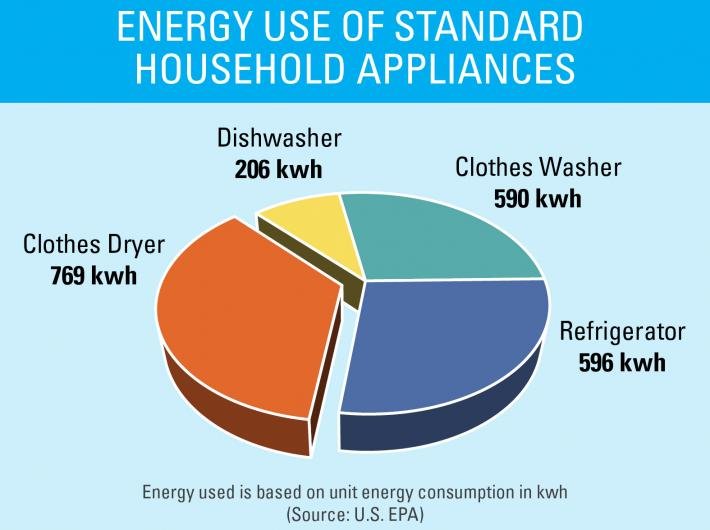
Manage Laundry Load
Reduce the number of loads
One of the simplest ways to make your dryer more energy-efficient is by reducing the number of loads you run. By combining smaller loads into fewer, larger loads, you can reduce both the energy and time required for drying. This method not only conserves energy but also minimizes wear and tear on your dryer. So, the next time you do laundry, try to wait until you have a full load before running your dryer for maximum energy efficiency.
Wash and dry full loads whenever possible
Similar to reducing the number of loads, washing and drying full loads whenever possible helps maximize energy efficiency. If you have enough laundry to fill the drum, take advantage of this opportunity to conserve energy. Running a full load ensures that the dryer’s capacity is utilized effectively, reducing the need for multiple cycles or wasted energy. By adopting this simple practice, you can make a significant difference in optimizing the energy efficiency of your dryer.
Opt for shorter wash cycles to minimize drying times
The length of the wash cycle can affect the efficiency of your dryer. Longer wash cycles often result in more water retained in the clothes, leading to longer drying times. To make your dryer more energy-efficient, opt for shorter wash cycles whenever possible. By reducing the moisture content in the clothes during the wash cycle, you can significantly decrease drying times, saving both energy and time. Be mindful of the wash cycle you choose, and select the shortest one that still effectively cleans your clothes.
Proper Loading Techniques
Shake out and untangle clothes before loading
Before loading your dryer, take a moment to shake out and untangle the clothes. This simple step helps prevent clothes from clumping together and ensures even drying. When clothes are tangled or balled up, they can create pockets of moisture, resulting in extended drying times. By shaking out and untangling the clothes, you allow better airflow and improve energy efficiency by reducing drying time.
Place larger items at the bottom
When loading your dryer, it is important to consider the arrangement of the items. Place larger items, such as blankets or towels, at the bottom of the dryer drum. This allows for more efficient heat distribution and airflow, ensuring that these items dry thoroughly. By prioritizing the positioning of your laundry load, you optimize the drying process and minimize the need for additional drying cycles.
Fold or roll clothes instead of balling them up
Properly folding or rolling clothes before placing them in the dryer can greatly contribute to its energy efficiency. Instead of balling up socks, underwear, or other small items, fold or roll them so that they have maximum exposure to the hot air. Balled-up clothes tend to retain moisture, resulting in prolonged drying times. By taking a little extra time to organize your laundry load, you can improve drying efficiency and save energy.
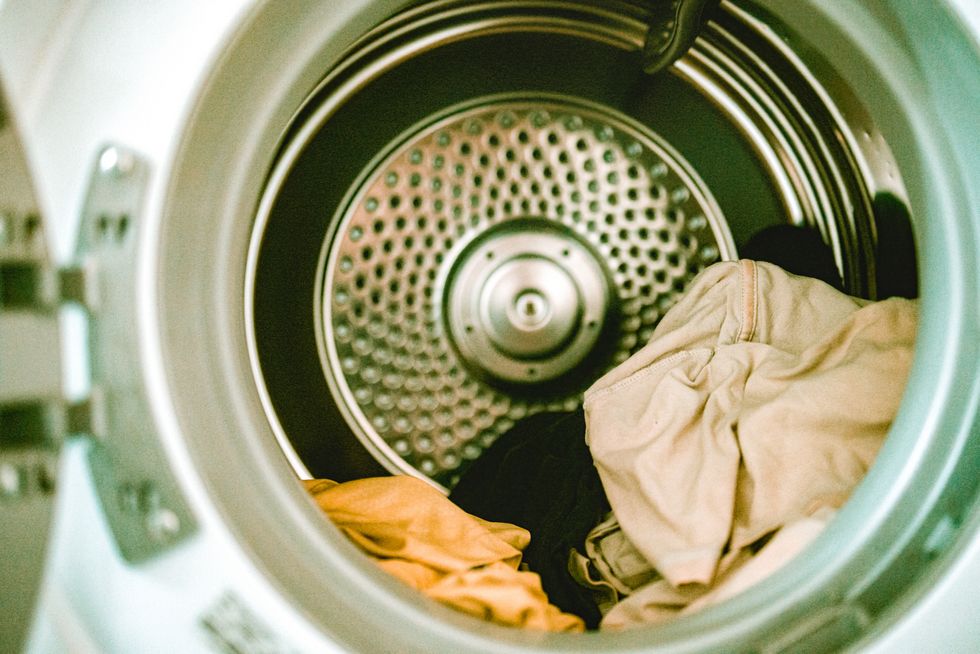
Using Dryer Balls
Add dryer balls or clean tennis balls to improve airflow
Dryer balls or clean tennis balls can be a valuable addition to your laundry routine. These small, circular objects are designed to improve airflow during drying cycles. By tossing a few dryer balls or clean tennis balls into the dryer drum, you help separate the clothes and prevent them from clumping together. This promotes better airflow and faster drying times. Furthermore, the gentle knocking action of the balls softens fabrics, reducing wrinkles and the need for ironing.
Shorten drying times and reduce wrinkles
In addition to improving airflow, dryer balls can also help reduce drying times and minimize wrinkles. The tumbling action created by the balls helps to loosen and fluff up the clothes, resulting in faster and more efficient drying. By shortening the drying time, you not only save energy but also reduce wear and tear on your clothes. Enjoy the added bonus of softer, less wrinkled garments by using dryer balls as a simple and effective energy-saving tool.
Avoid using dryer sheets
While dryer sheets may provide a pleasant scent and reduce static cling, they can hinder the energy efficiency of your dryer. Dryer sheets leave residue on clothing and the lint trap, affecting airflow and reducing efficiency. Instead of using dryer sheets, consider using alternative methods to achieve the same benefits. For example, using dryer balls or adding a few drops of essential oils to a dryer ball can impart a fresh scent to your laundry without compromising energy efficiency.
Consider Time of Use
Take advantage of off-peak electricity rates
Many utility companies offer off-peak electricity rates during certain times of the day or week. By taking advantage of these lower rates, you can save money and make your dryer more energy-efficient. Check with your utility provider to determine the specific off-peak hours and plan your laundry schedule accordingly. Running your dryer during these periods can help reduce your energy costs and ease the strain on the power grid during peak demand times.
Run the dryer during cooler hours to reduce strain on air conditioning
Running your dryer during cooler hours of the day can have an indirect impact on energy efficiency. By avoiding peak heating or cooling periods, you lessen the strain on your home’s air conditioning system. During hot summer days, running the dryer can contribute to the overall heat load in your home, causing the air conditioner to work harder and consume more energy. By running the dryer when the outside temperature is cooler, you reduce the demand on your air conditioning and enhance overall energy efficiency.
In conclusion, making your dryer more energy-efficient not only benefits the environment but also helps you save money in the long run. By following regular maintenance routines, optimizing your loads, employing drying tips, utilizing energy-efficient settings, exploring alternatives, upgrading to energy-efficient models, managing your laundry load with proper techniques, using dryer balls, and considering the time of use, you can significantly reduce energy consumption and make a positive impact on your household’s carbon footprint. With these simple yet effective strategies, you can enjoy the convenience of a dryer without sacrificing energy efficiency or the performance of your appliance. Start implementing these practices today and reap the rewards of a more energy-efficient dryer.
